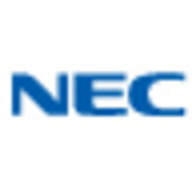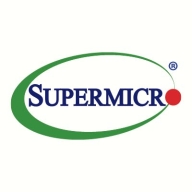

NEC Sigmablade-M and Supermicro SuperBlade are competing solutions in high-performance computing. Supermicro SuperBlade offers feature richness and perceived value, making it a favored choice despite its higher cost.
Features: NEC Sigmablade-M is characterized by power efficiency, scalability, and flexible expansion. It suits businesses seeking these benefits. Supermicro SuperBlade, on the other hand, stands out with advanced integration, computing power, and superior computational capabilities, offering a performance and integration edge.
Ease of Deployment and Customer Service: NEC Sigmablade-M provides streamlined deployment and efficient configuration with responsive support, ideal for clients not focused on extensive features. Supermicro SuperBlade may have a slightly more complex deployment due to extensive features but ensures knowledgeable support during setup, aligning with those needing comprehensive support.
Pricing and ROI: NEC Sigmablade-M is cost-effective, appealing to budget-conscious organizations, maximizing ROI through low power consumption and operational efficiency. Supermicro SuperBlade involves higher upfront costs but offers substantial returns over time due to enhanced performance and integrated solutions.
| Product | Market Share (%) |
|---|---|
| Supermicro SuperBlade | 8.0% |
| NEC Sigmablade-M | 1.0% |
| Other | 91.0% |

The NEC SIGMABLADE-M is an 8-blade chassis that comprises 6U of rack space and offers a compact size that is ideal for mid-sized systems, easy monitoring of the status of each blade server, and better and easier cabling through the use of KVM switches.
Supermicro SuperBlade delivers innovative computing performance and efficiency, perfect for data-intensive tasks. With its modular design, it optimizes space and power, providing a flexible and scalable infrastructure for demanding business workloads.
Supermicro SuperBlade is specifically engineered for modern data centers needing high-density computing. It offers a compact, modular architecture that simplifies system management and enhances agility. It integrates seamlessly with cloud and virtualization technologies, supporting diverse applications and workloads. Its design focuses on reducing operational costs while achieving peak performance. Users appreciate its balance of power efficiency and high computing capacity.
What are the key features of Supermicro SuperBlade?Supermicro SuperBlade is widely implemented in sectors such as finance, healthcare, and research where high computational power and storage are critical. In finance, it's used for real-time analytics and transactions. Healthcare facilities use it for patient data analysis and complex simulations, while research institutions leverage SuperBlade for simulations and data-intensive research tasks. Its adaptability allows enterprises to efficiently meet technical requirements unique to each industry.
We monitor all Blade Servers reviews to prevent fraudulent reviews and keep review quality high. We do not post reviews by company employees or direct competitors. We validate each review for authenticity via cross-reference with LinkedIn, and personal follow-up with the reviewer when necessary.